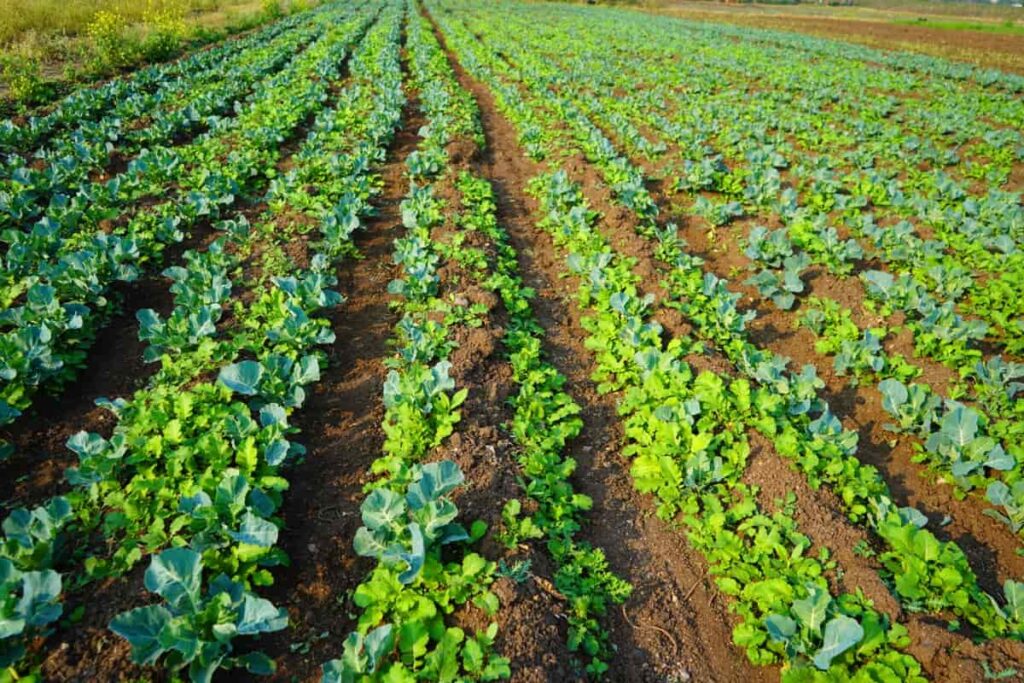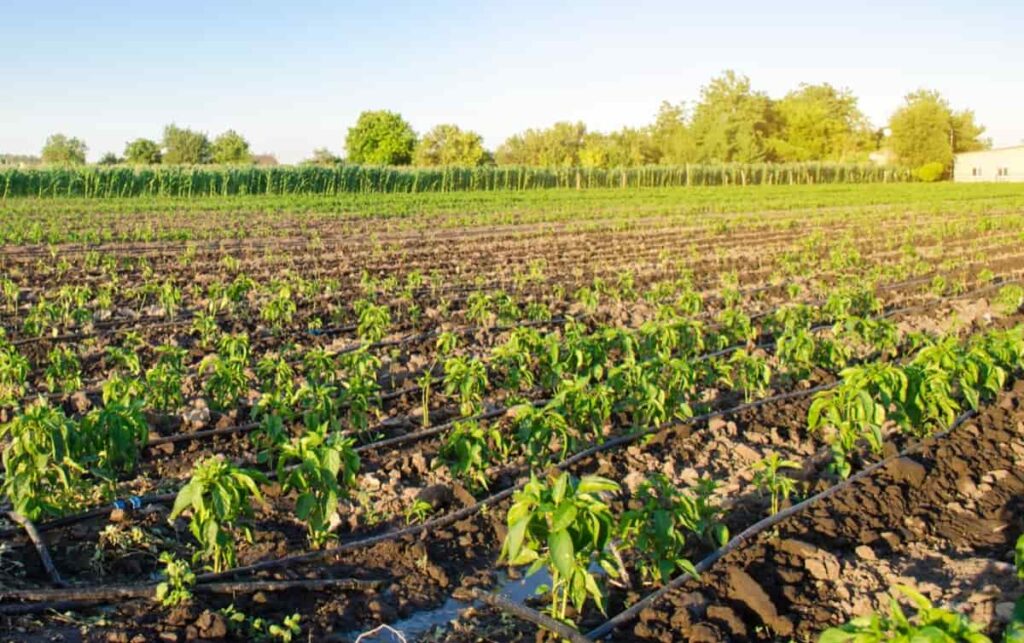There is a need for government schemes to provide its citizens with a better and more sustainable standard of living. The agriculture sector also needs government attention, like any other. Agriculture and allied activities provide most of the livelihood for India’s population. The central government introduces programs that help farmers plan and organize their farming activities prudently.
The government is aware that agriculture plays a significant role in the economy’s GDP. The government pays special attention to this sector for the economy to prosper. The government of India gives high priority to the welfare of the farmers. It implements several farmers’ welfare schemes to revitalize the agriculture sector and improve their economic conditions.
Several new initiatives have been rolled out by the government, including the Soil Health Card Scheme, Neem Coated Urea, the Paramparagat Krishi Vikas Yojana, the Pradhan Mantri Krishi Sinchayee Yojana, the National Agriculture Market (e-NAM), and the Pradhan Mantri Fasal Bima Yojana. The schemes are designed to benefit all farmers. Detailed information about the schemes can be found below
List of Agricultural Schemes in India
Soil Health Card Scheme
It was launched in 2015, and the scheme has been introduced to assist state governments in issuing soil health cards to all farmers in the country. Many benefits come with the Soil Health Card Scheme for farmers. In India, there are a huge number of farmers. Many farmers have no idea what crops they need to grow to maximize their yields. They do not know the soil quality and type in their area.
In case you missed it: State Specific Schemes for Farmers in India

By experience, they might be able to determine what crops are likely to succeed and which crops are likely to fail. But they don’t know what they can do to improve the soil’s condition to improve crop quality. As part of the soil health cards, farmers are supplied with information regarding the soil’s nutrient status and recommended nutrients that can be applied to their soil to improve its health and fertility.
Benefits of the Soil Health Card Scheme
- As part of this scheme, the farmers’ soil will be monitored well, and a formatted report will be given to them. As a result, they will be able to decide which crops they should cultivate and which ones they should skip over.
- There will be regular monitoring of the soil by the authorities. A report will be provided to farmers once every three years by them. As a result, farmers do not need to worry about the soil’s nature changing due to unpredictable factors. Furthermore, they will always have up-to-date information about their soil. As a result, they can plan for their crops and land.
- In addition, the soil card will give the farmers a clear idea of what nutrients their soil lacks and what they need to add. Thus, they can determine which crops they should invest in. As well as telling them what fertilizer they need, they will also tell them what fertilizer to use. This, in turn, will result in a rise in crop yields in the long run.
Neem Coated Urea (NCU)
A scheme of this kind is being promoted to ensure the proper use of urea in agriculture, improve the availability of nitrogen to crops, and reduce the costs associated with fertilizer application. In the case of NCU, the release of fertilizer is slowed down, and it is made available to the crop in an effective method. In the last few months, the entire quantity of urea manufactured domestically and imported has been coated with Neem. It has been reported that the field reports have been positive. It is estimated that 10% of urea consumption will be saved, resulting in a reduction in cultivation costs and better soil health management.
The difference between Plain urea and Neem Coated Urea
- In Neem-coated urea, they put a layer of Neem over the plain urea, increasing the land fertility capacity and leading to crop production.
- The oil coating of Neem in Neem coated urea mixes up slowly with the land, and the crops soak it according to the need.
- The unwanted urea is washed away with water or diluted in the air as nitrogen. The maximum manure unit is left unused if the farmer uses Normal urea or Plain urea.
Advantages of NCU
- Improvement in soil health.
- Reduction in costs concerning plant protection chemicals
- Reduction in pest and disease attack
- An increase in paddy, sugarcane, maize, soybean, and tur/red gram yields of 5.79%, 17.5%, 7.14%, 7.4%, and 16.88%, respectively
- Diversion of highly subsidized urea towards non-agricultural purposes is negligible among farmers after the introduction of the mandatory policy of production and distribution of only NCU
Paramparagat Krishi Vikas Yojana (PKVY)
PKVY (Paramparagat Krishi Vikas Yojana) is a scheme implemented to promote organic farming in the country. This will improve the soil’s soil health and organic matter content and increase farmers’ net income, allowing them to realize premium prices for their crops. As part of the scheme, organic farmers are supported at every step, from production to certification to marketing.
In case you missed it: Red Banana Farming in India: How to Start, Cultivation Practices, and Panting to Harvesting Guide

As part of these schemes, organic farmers are provided with post-harvest management support, which includes processing, packing, and marketing services following the harvest. Under this scheme, every farmer will be provided Rs. 20,000 per acre in three years from the seed to harvesting of crops and transporting produce to the market. Organic farming will be promoted using traditional resources, and organic products will be linked with the market. It will increase domestic production and certification of organic produce by involving farmers.
Pradhan Mantri Krishi Sinchayee Yojana (PMKSY) :
This program, called the Pradhan Mantri Krishi Sinchayee Yojana (PMKSY), was launched on the 1st of July 2015 with the theme of “Har Khet Ko Paani,” to increase the cultivated area with assured irrigation facilities, reducing wastage of water, and improve the efficiency of water usage.
In case you missed it: Farming Loans in India: How to Apply, Bank Process, Rates, and Funding for Agricultural Startups

The PMKSY not only focuses on creating sources of assured irrigation but also creates protective irrigation by utilizing rainwater to harvest water at the micro level through the use of ‘Jal Sanchay’ and ‘Jal Sinchan.’ There are also incentives for micro irrigation through subsidy to ensure that ‘Per drop-More crop’ is achieved. The target set for the year 2021-22 under micro irrigation was 10 lakh hectares, against which 8.39 lakh hectares have been covered so far.
National Agriculture Market (e-NAM)
National Agriculture Market (NAM) is an electronic trading portal completely funded by Central Government and implemented by Small Farmers Agribusiness Consortium (SFAC). NAM portal networks the existing APMC (Agriculture Produce Marketing Committee) / Regulated Marketing Committee (RMC) market yards, sub-market yards, private markets, and other unregulated markets to unify all the nationwide agricultural markets by creating a central online platform for agricultural commodity price discovery.
The common electronic trading portal will be called e-NAM. The National Agriculture Market Scheme (e-NAM) envisions the creation of an e-marketing platform at the national level to facilitate e-commerce in agriculture. Until the end of March 2018, 585 regulated markets across the country were able to use e-marketing due to the infrastructure that was created to enable it.
In short, this innovative market process is revolutionizing markets by ensuring better prices, bringing in transparency and competition to enable farmers to get better remuneration for the products they produce, and moving towards a one nation, one market economy. According to the e-NAM portal, 47.95 lakh farmers and 91,500 traders have registered so far.
Pradhan Mantri Fasal Bima Yojana (PMFBY)/ Restructured Weather-Based Crop Insurance Scheme (RWBCIS)
(PMFBY) The Pradhan Mantri Fasal Bima Yojana and (RWBCIS) the Restructured Weather Based Crop Insurance Scheme, were launched in Kharif 2016 to provide comprehensive coverage against non-preventable natural risks from pre-sowing to post-harvest losses in agriculture. Among the numerous risk mitigation tools available to farmers, these schemes are the only ones with extremely low premium rates payable at 2% for Kharif crops, 1.5% for Rabi crops, and 5% for commercial/horticultural crops on an annual basis.
In case you missed it: Top 15 Agritech Startups Helping Farmers in India: Smart Farming for High Yields and Low Pests and Disease

Per the 50:50 formula, both the Central and State Governments share the remaining actuarial premium equally. State governments can participate in the voluntary scheme, which is available in the areas and crops that the State Governments have notified as eligible for participation. Furthermore, loanee farmers are required to participate in the scheme, while non-loanee farmers are allowed to participate voluntarily.
Pradhan Mantri Fasal Bima Yojana (PMFBY) Scheme Obejectives
- Assist farmers in case of crop failure resulting from natural calamities, pests, and diseases.
- Ensure the sustainability of farming by stabilizing farmers’ incomes.
- To promote modern and innovative agricultural practices among farmers.
- To make sure that credit is flowing to the agriculture sector
Interest Subvention Scheme (ISS)
A government interest subsidy of 3% is available for short-term crop loans up to Rs.3.00 lakh. The loan is available to farmers at an interest rate of 7% per annum, which is reduced to 4% when promptly repaid. To provide relief to farmers when natural calamities occur, the interest subvention of 2% will continue to banks for the first year under Interest Subvention Scheme 2016-17.
In case you missed it: Beekeeping Business Plan: Bee Farming Cost, Profit, and Project Report in India

Providing interest subventions to small and marginal farmers with Kisan Credit Cards for a further period of up to six months post-harvest on the same rate as crop loans will be intended to discourage distress sales by farmers and encourage them to store their products in warehouses against negotiable warehouse receipts.
Mission Organic Value Chain Development for North Eastern Region
The ministry of agriculture and farmer welfare has launched a central sector scheme for developing organic farming in the country’s northeastern region. Assam, Arunachal Pradesh, Assam, Manipur, Meghalaya, Mizoram, Nagaland, Sikkim, and Tripura will implement this scheme during the 12th plan period. By developing certified organic production in a value chain mode, growers and consumers can be linked. The entire value chain will be supported, from inputs, seeds, and certification to building facilities for collection, processing, aggregation marketing, and brand building.
The scheme started with an average annual allocation of Rs. 134 crores during the last five years and has covered 74,880 ha. To double the impact, the allocation has now increased to Rs. 200 crores per year with a target to cover an additional 1.00 lakh ha area under 200 new FPOs over three years. Besides growing and adding traditional crops, taking a step ahead of the scheme also aims to bring high-value crops under contract farming models.
Objectives of Mission Organic Value Chain Development for North Eastern Region
- Creating at least two replicable organic value chains in each state, including growers, handlers, processors, and market facilitation agencies, to replicate organic value chains
- Creating about 100 farmer-producer companies in the Northeastern region, and equipping these companies with a full value chain under their ownership, is aimed at empowering 30-50 thousand farmers in the region.
- Converting subsistence farming to commercial organic farming with end-to-end facilities to increase food production
- This project mainly aims to make the Northeastern states a major source of organic commodities for the national and international markets.
- To ensure higher productivity with better profitability, the production system needs to be improved
- To facilitate the evolution of the state’s brand through the use of new technologies.
Kisan Credit Card (KCC)
The Central government launched the Kisan Credit Card (KCC) scheme in 1998 to provide adequate and timely credit to farmers for their agricultural expenditures. As part of the scheme, the Government of India offers farm credit at a subsidized rate of 4 percent per year. The Kisan Credit Card has been extended for animal husbandry, dairy, and fisheries farmers since 2019. The maximum collateral-free loan limit has been increased from Rs. 1 lakh to Rs. 1.60 lakh.
In case you missed it: Sandalwood License, Loan in India: Number of Sandalwood Trees, Cultivation Profit Per Acre, Weight After 10 and 15 Years

The Centre has announced to cover 2.5 crore farmers under the KCC scheme with a credit boost of Rs 2 lakh crore through a special drive as part of the Aatmanirbhar Bharat package. Based on the Government of India’s data, by October 2020, the package will have disbursed Rs. 1.35 lakh crore to 1.5 crore farmers.
Conclusion
As a state subject, agriculture is primarily the responsibility of the state government in each state. The government supports states’ efforts through well-supported policy measures and budgetary support. India’s agricultural policy has shifted from a product-centric to an income-centric platform in the past few years. The above schemes are being implemented to make farming more viable.
- How to Raise Pigs in Your Own Backyard: A Comprehensive Guide
- Budget Friendly Sheep Shed Ideas: Cheap and Low-Cost Tips
- How Much Do Cattle Farmers Make: Revenue Streams in Cattle Farming
- Management Pests and Diseases in Your Cotton Field
- Sheep Farming Business Plan for Beginners
- Aquaponic Farming at Home: A Step-By-Step Guide
- Profitable Village Farming Business Ideas in 2024
- High-Yield Aquaculture: Fast-Growing Fish for Farming
- Effective Fish Pond Construction Techniques for Beginners
